
 Connemaras
Connemaras  The Premier Pony for Sport & Recreation
The Premier Pony for Sport & Recreation Do
you want a horse or pony that has to be trained and/or ridden
by a professional to reach their full potential?
Do
you want a horse or pony that has to be trained and/or ridden
by a professional to reach their full potential?
Do you want one that can only work half the time you want to ride
or drive because of soundness issues?
Do you want one that has to be ridden 5 times a week to keep it's
training in tuned? Do
you want a horse or pony that the whole family will enjoy?
Do
you want a horse or pony that the whole family will enjoy?
Do
you want one that is fun to be around and who likes to be with
you?
Do
you want one who is willing to do whatever suits your fancy?
Do
you want one who is happy and able to live without a barn, shoes,
blankets or grain ?
Do
you want who can go to the top, without the drama that so many
of the less-agreeable temperaments bring to the game ?
 Then Consider a Connemara!!
Then Consider a Connemara!! Read
more below on this super pony, cherished by Connemara enthusiasts
and equestrians around the world.
The Connemara
Pony is Ireland's Native Breed. It is the largest of the pony
breeds and ranges in height from 13 to 15 hands high, with 14
to 14.2 hands being the average. Full maturity is reached at five
years of age, sometimes older, and they can live well into their
30’s. The Connemara “stands on short legs, covering
a lot of ground”. They are easy keepers who do not require
a rich diet to stay fit and healthy.
Read
more below on this super pony, cherished by Connemara enthusiasts
and equestrians around the world.
The Connemara
Pony is Ireland's Native Breed. It is the largest of the pony
breeds and ranges in height from 13 to 15 hands high, with 14
to 14.2 hands being the average. Full maturity is reached at five
years of age, sometimes older, and they can live well into their
30’s. The Connemara “stands on short legs, covering
a lot of ground”. They are easy keepers who do not require
a rich diet to stay fit and healthy.
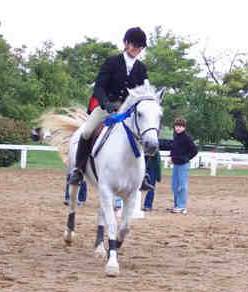
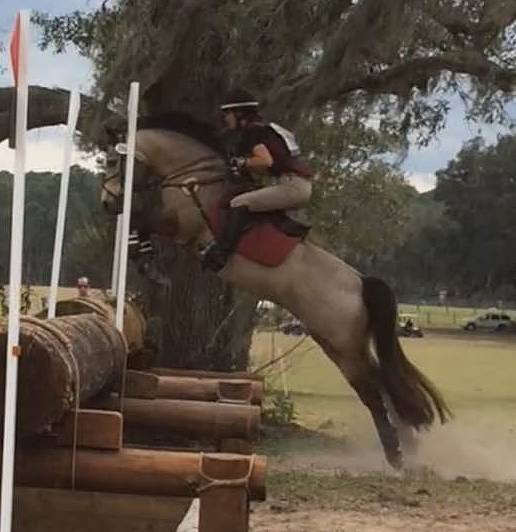
above left
to right: Amanda Glueck (KY) on Foothills Juniper and Elliott Blackmon on W.H. Topgun, purebred Connemara stallion (2017 Rocking
Horse HT)

 American
Connemara Pony Society
ACPS
Region IV News Page
American
Connemara Pony Society
ACPS
Region IV News Page


 ICCPS
ICCPS The Connemara Pony
Connemara,
Ireland
INTERNET ARTICLES:
The Connemara Pony
Connemara,
Ireland
INTERNET ARTICLES:
 That's Farming: Introducing the
Connemara Pony
That's Farming: Introducing the
Connemara Pony
 A Country Lady: Why Buy A Connemara
Pony
A Country Lady: Why Buy A Connemara
Pony
 USDF Breed of the Month: Connemara
USDF Breed of the Month: Connemara
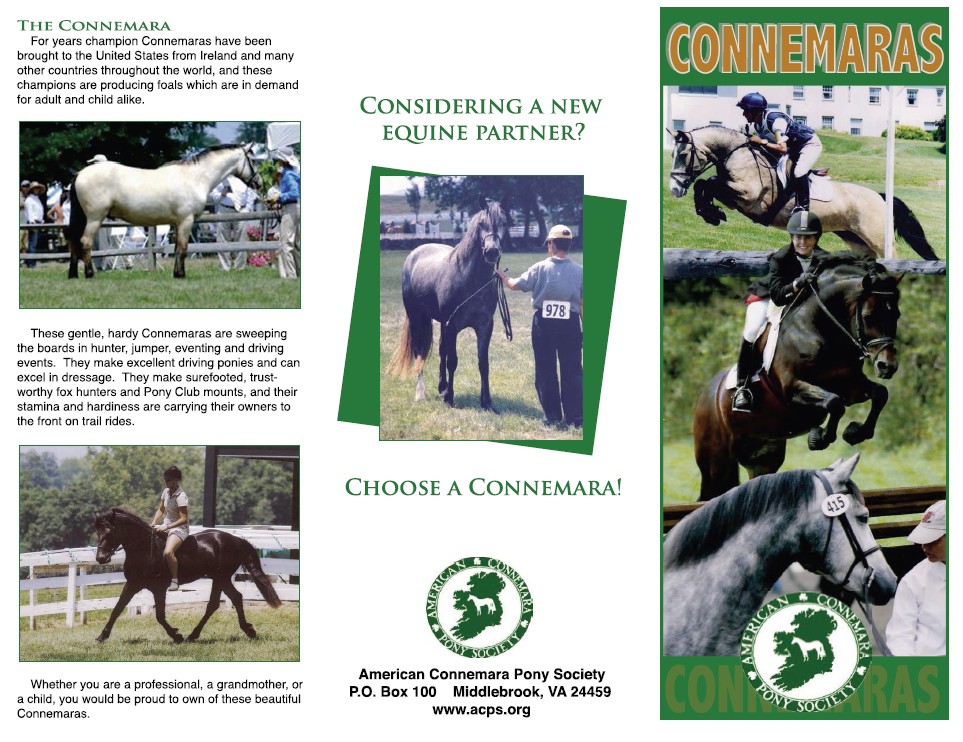

CONNEMARAS
ARE FUN! 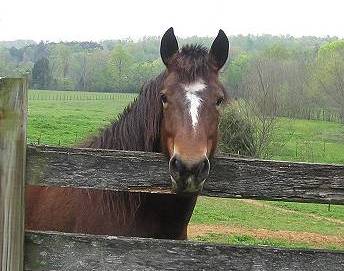
Corner
Oak Celtic Star a.k.a. "CoStar" (photo right)
It's such a joy to
see that happy face peering over the stall door or trotting up
to the gate to greet you.
A few of the many reasons
that Connemaras are loved by the whole family:
Dad's love them because
they are relatively low cost to purchase and maintain. They are
easy-keepers. Most do not required a lot of feed and do very well
with just supplemental hay in the winter. Unless riding over rocky
terrain, they usually do very well without shoes and their hooves
hold up extremely well between trims. Connemaras are normally
quite happy living in the pasture and do not need blankets in
the winter (unless body clipped).
Husbands love them
because they are uncomplicated and easy to handle. Connemaras
are friendly and respond well to carrots and scratching.
Mom's love them because
they are sweet, gentle, and safe.
Kids love them because
they love to jump and are usually brave and honest.
Teenagers love them
because they are reliable best friends that love you back. They
also keep you out of trouble.
Grandparents love them
because, like themselves, they are very forgiving. They also provide
a source of enjoyment they can share with their grandchildren.
Amatures and weekend
riders love them because they do not need to be drilled, ridden
daily, or by professionals to be competitive.
And the list goes on...
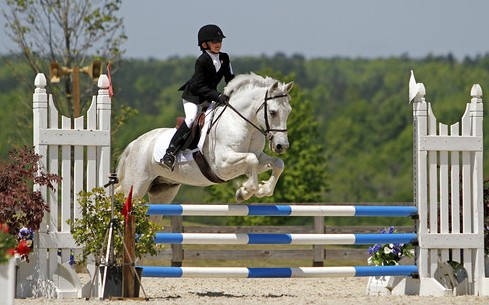
Balmullo's
Beacon
Connemaras are bought for a variety of uses.
Most
often they are purchased for some jumping or other english riding
discipline such as pony hunters, jumpers, foxhunting, eventing,
or dressage.
Additionally,
they often double as breeding stock or pleasure/trail mounts
(including the stallions) & are sometimes used for driving,
endurance or western riding. |
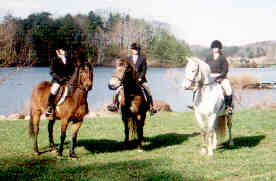
Hunt Day with the Tennessee Valley Hounds: (L-R) Big Bear's Cormac McCarthy (halfbred
gelding), Misty Meadow Miss Bonnie (purebred mare) & Fiddlers
Gremlin MacDaire (purebred gelding) |
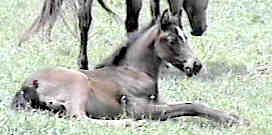
Foothills
Hopefilly |

At Foothills
Farms & Piedmont Connemaras, our home-bred foals are well
handled from birth. We breed for disposition, type and ability.
Our young Connemara ponies and Connemara-cross horses are people-oriented
with excellent ground manners. They usually sell before starting
under saddle, when they are more affordable to most buyers.
|
 More
about Connemaras
More
about Connemaras The
Connemara has a natural jumping ability and its build makes it
also quite suitable for dressage. They often compete and win over
horses 16 hands and taller with their inherent endurance, intelligence
and heart. They are excellent choices for pony club; because they
are as they are so versatile, trustworthy and willing, they are
often shared between family members who enjoy different activities.
The
Connemara has a natural jumping ability and its build makes it
also quite suitable for dressage. They often compete and win over
horses 16 hands and taller with their inherent endurance, intelligence
and heart. They are excellent choices for pony club; because they
are as they are so versatile, trustworthy and willing, they are
often shared between family members who enjoy different activities.
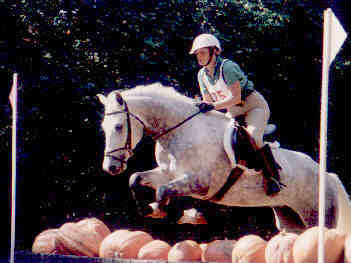 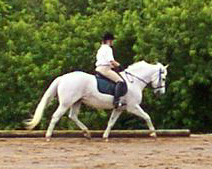
L-R: Fiddler's Gremlin
MacDaire, Foothills Ladybug
|
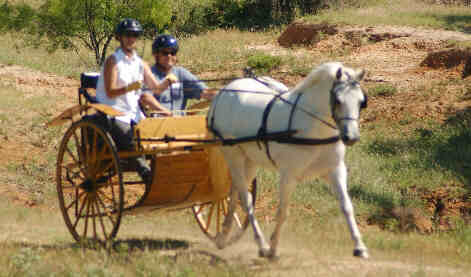
|
Connemaras
can do it all, from foxhunting, show jumping, eventing, working
hunter, dressage, western pleasure, endurance, driving and most
importantly, being your best friend.
L: Foothills
Magnolia |
- Type and Conformation: Connemaras
in North America range from 13 to over 15 hands. Their colors
are gray, bay, brown, and dun, with some roans, an occasional
black, chestnut, or palomino. Piebalds and skewbalds are not
acceptable for registration. Connemaras are the product of their
original environment, the rugged mountain coast of West Ireland.
Sure-footed, hardy and agile, they possess powers of great stamina,
staying power and adaptability. They are renowned for their versatility
and their gentle, tractable, sensible and willing dispositions.
- Temperament: Mannerly and
manageable, kind, responsive, possessing good sense and basic
intelligence.
- Type: Rugged and sturdy;
body compact and deep through the heart; with well sprung rib
cage and broad chest.
- Action: Straight and true
both front and rear with free movement in the shoulders. Connemaras
should move underneath themselves and should be sure-footed,
athletic, and clever, covering a lot of ground.
- Head: Kind eye, head well
shaped and balanced in proportion to the rest of the body, neck
of good length and definition, meeting the shoulder smoothly.
- Shoulders: Laid-back with
good slope.
- Back: Strong and muscular;
some length of back is normal in Connemaras, especially in mares.
- Hindquarters: Well rounded
and deep with good length from the point of the hip through the
haunch; should balance the shoulders.
- Bone: Clean, hard, flat,
measuring 7- 8 inches below the knee for ponies, more for horses;
forearms and gaskins long and muscular, cannons short and very
dense.
- Joints: Large and well defined.
- Feet: Hard, strong.
|
The
Connemara Breed Standard
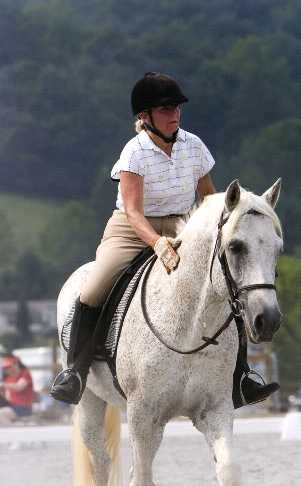 above: Balmullo's
Beacon
above: Balmullo's
Beacon |
Foothills River Queen and Foothills Hopefilly (2015)

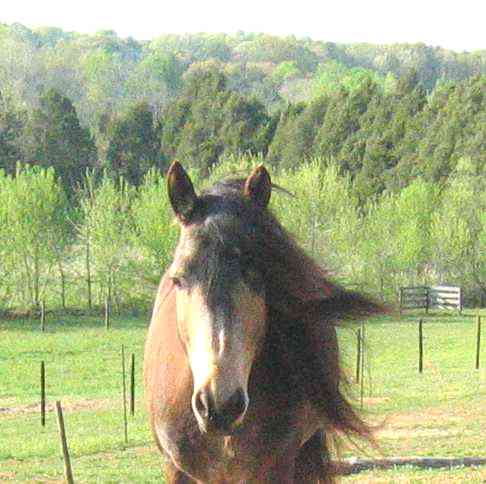 ORIGIN
AND HISTORY OF THE CONNEMARA PONY: The region known as Connemara lies in an
area of western Ireland. It is known for its harsh mountainous
terrain, endless desolate moors and bogs and rocky barren shores
pounded by the tides and the storms of the Atlantic. Out of this
rugged landscape has come the indigenous breed of pony called
the Connemara Pony.
The origins
of the Connemara Pony date back approximately 2,500 years ago.
The Connemara is considered Ireland’s only native breed.
Celtic warriors, who were renowned as horsemen, brought their
dun coloured ponies to the Emerald Isle to draw carts and chariots
and to use in the daily lives of these settlers in their new found
home. It is believed that when the Spanish Armada sank in the
16th century off the coast of Connemara, the horses swam to shore
and bred with the native ponies that ran wild in the mountains.
These ponies had to learn to survive in this harsh land foraging
on the sparse and tough vegetation, where one misplaced step could
send a pony to its death.
Connemaras are a product
of their original environment, the wild and windswept hillsides
of western Ireland. Only animals of the hardiest constitution
could survive the storms blowing in from the Atlantic Ocean, lying
out in every kind of weather, relying mostly on gorse & heather
for their food. Native Connemaras live out of doors from the day
they are foaled, and even most American breeding stock is also
pasture-raised and field-kept. Even those American Connemaras
that are bred in gentler climates and kept in smoother pastures
have retained their hereditary sure-footedness and natural jumping
ability.
ORIGIN
AND HISTORY OF THE CONNEMARA PONY: The region known as Connemara lies in an
area of western Ireland. It is known for its harsh mountainous
terrain, endless desolate moors and bogs and rocky barren shores
pounded by the tides and the storms of the Atlantic. Out of this
rugged landscape has come the indigenous breed of pony called
the Connemara Pony.
The origins
of the Connemara Pony date back approximately 2,500 years ago.
The Connemara is considered Ireland’s only native breed.
Celtic warriors, who were renowned as horsemen, brought their
dun coloured ponies to the Emerald Isle to draw carts and chariots
and to use in the daily lives of these settlers in their new found
home. It is believed that when the Spanish Armada sank in the
16th century off the coast of Connemara, the horses swam to shore
and bred with the native ponies that ran wild in the mountains.
These ponies had to learn to survive in this harsh land foraging
on the sparse and tough vegetation, where one misplaced step could
send a pony to its death.
Connemaras are a product
of their original environment, the wild and windswept hillsides
of western Ireland. Only animals of the hardiest constitution
could survive the storms blowing in from the Atlantic Ocean, lying
out in every kind of weather, relying mostly on gorse & heather
for their food. Native Connemaras live out of doors from the day
they are foaled, and even most American breeding stock is also
pasture-raised and field-kept. Even those American Connemaras
that are bred in gentler climates and kept in smoother pastures
have retained their hereditary sure-footedness and natural jumping
ability.
Farmers of the area led a hard life with large families to support.
Only able to afford one good pony, a mare that could give the
farmer a foal each year to sell, farmers used this one pony to
pull carts, ploughs working from sunrise to sunset. These ponies
were also fitted with baskets called creels to carry loads of
rocks, seaweed to fertilize the fields and turf cut from the bogs
to use for cooking and heating. The mare would also cart the family
to church on Sunday. If the mare did not have the stamina, disposition
and hardiness required, she would be replaced with a mare that
did. It was this that kept the mares that could produce these
qualities in their foals in Connemara.
(left: *Gun Smoke) Connemaras are bred in Ireland for
utility. Such characteristics as docility and intelligence are,
therefore as important as hardiness and staying power. Connemaras
tend to be gentle and biddable; they make very desirable mounts
for children because they are sensible and very willing. These
qualities combine with their jumping ability to make them excellent
choices for eventing, show-jumping, and foxhunting. They also
compete with marked success in dressage, endurance riding, and
driving events. The fact that Connemara stallions may be shown
by Juniors in performance classes for Connemaras is further evidence
of the reliable temperament of the breed.
The sport
of local racing was very popular and the Connemaras could compete
equally with the larger racing breeds, the thoroughbreds and the
Irish Hunters.
In 1923, the Connemara Breeding Society was formed by the local
breeders in Clifden for the purpose of conserving and developing
the breed. Today Connemara Pony Societies can be found worldwide
– England, America, Australia, New Zealand, France, Finland,
Norway, Sweden, Denmark, Belgium, Germany, Italy, South Africa,
Switzerland, Holland, Austria and Canada. The natural abilities
of these ponies have made them excellent partners with those who
own them, and have allowed them to compete worldwide with the
best of the Sport Horse breeds.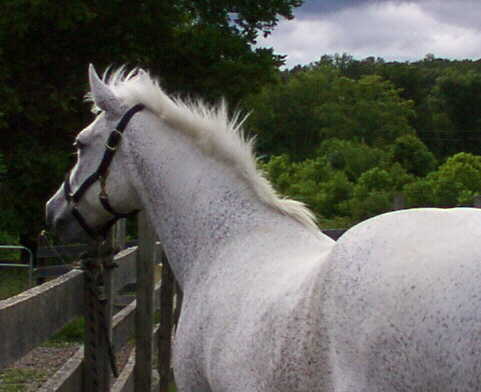
(below right:
Foothills Ladybug)
"The publication of a Connemara Pony stud
book is an attempt to foster and develop, on systematic lines,
a native breed which has existed for centuries, the merits of
which are recognised not only in Ireland but outside it. In Connemara,
unlike many other pony breeding localities, breeding mares work
throughout the year; consequently a form of natural selection
for utility purposes is continually at work. Awkward, ill-tempered
or badly constituted animals are of little or no value to the
Connemara farmer owing to the nature of the work which has to
be done and the conditions under which it has to be carried out.
It will be understood, therefore, that only the very best can
be retained for breeding which accounts for the fact that although
unsuitable foreign blood has been introduced from time to time
its influence on the permanent breeding stock has been slight...
Ponies vary slightly in size and character, according to the district
in which they are bred, but it is generally admitted that a compact,
short-legged pony, about 13 hands 2 inches high with good shoulders
and true and easy movement, is the most suitable type to develop.
This class of animal, while eminently suitable for the work in
Connemara, is also the type which is likely to meet with more
demand from outside. The aim of the Society is to secure by continued
selection and careful fostering a breed of ponies uniform in size
and shape, suitable for general utility purposes and which, when
bred from under favourable conditions, would be capable of producing
high class riding animals."
The largest Connemara show in the world takes place yearly in
Clifden, Connemara, Ireland on the third Thursday in August. The
show, organized by the Connemara Pony Breeders Society, has been
featured since 1924 and showcases over 400 of the finest Connemara
Ponies in the country. This show also brings Connemara Ponies
from around the globe. Foreign breeders have the chance to meet
Irish breeders and Ponies have the opportunity to compete in over
20 classes.
In 1956, there was a sufficient
number of Connemaras in America to create a demand for a society
of people interested in this hardy and versatile breed. The American
Connemara Pony Society (A.C.P.S.) was formed "in recognition
of the need for a pony of great stamina and versatility, capable
of carrying an adult in the hunting field, yet gentle and tractable
enough for a young child, fearless as a show jumper yet suitable
and steady as a driving pony".
As Connemaras are rugged,
easily trained and maintained, they are much in demand for Pony
Club, 4-H Horse Clubs, and riding academies. Because of their
size and substance - they are the largest of the native pony breeds
- they may serve as mounts for novice riders of almost any age
or height. They make delightful family animals, able to pull a
buggy or a sleigh, go trail-riding, and be the neighborhood pet.
Their even dispositions prove invaluable both at home and in the
most demanding competitive situations. Connemaras in America are
loved and respected by an increasing number of enthusiastic owners.
They are renowned for their
versatility and their gentle, tractable, sensible and willing
dispositions.
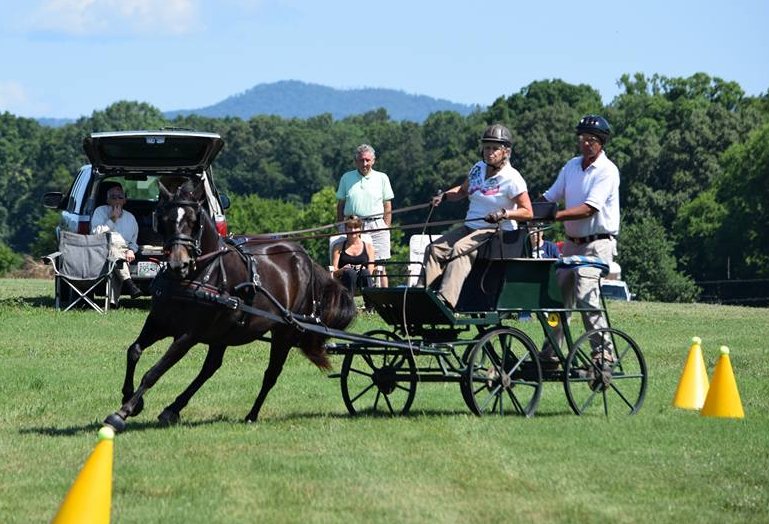 Foothills
Hopefilly
(2015)
Foothills
Hopefilly
(2015)
For more information on the
breed, famous Connemaras, A.C.P.S. membership, registration, awards,
and the "American Connemara" magazine, etc., go to the
ACPS Homesite 

 2016
On-line Connemara Stallion Guide
2016
On-line Connemara Stallion Guide
 2017
Stallions of North America spreadsheet
2017
Stallions of North America spreadsheet
 Connemara
Stallions of NA
Connemara
Stallions of NA facebook group
In tribute
to the ponies of Foothills Farms and Piedmont Connemaras that
we have loved and lost
facebook group
In tribute
to the ponies of Foothills Farms and Piedmont Connemaras that
we have loved and lost memorial
memorial
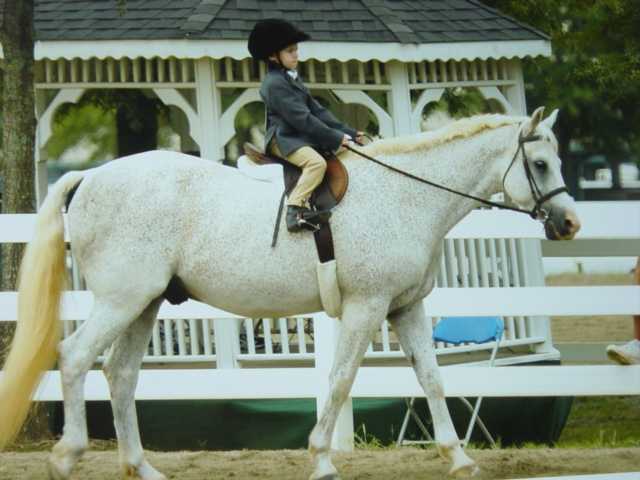
















 ORIGIN
AND HISTORY OF THE CONNEMARA PONY: The region known as Connemara lies in an
area of western Ireland. It is known for its harsh mountainous
terrain, endless desolate moors and bogs and rocky barren shores
pounded by the tides and the storms of the Atlantic. Out of this
rugged landscape has come the indigenous breed of pony called
the Connemara Pony.
ORIGIN
AND HISTORY OF THE CONNEMARA PONY: The region known as Connemara lies in an
area of western Ireland. It is known for its harsh mountainous
terrain, endless desolate moors and bogs and rocky barren shores
pounded by the tides and the storms of the Atlantic. Out of this
rugged landscape has come the indigenous breed of pony called
the Connemara Pony.
 Foothills
Hopefilly
(2015)
Foothills
Hopefilly
(2015)

